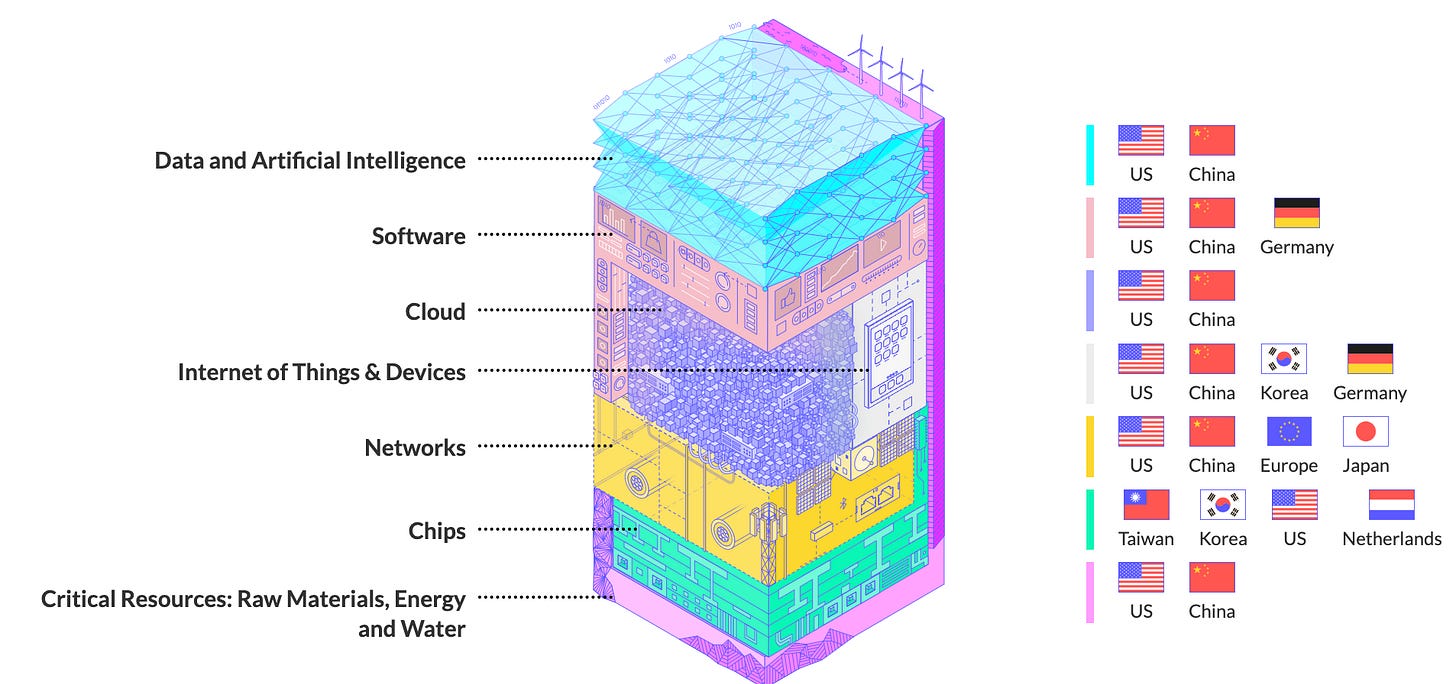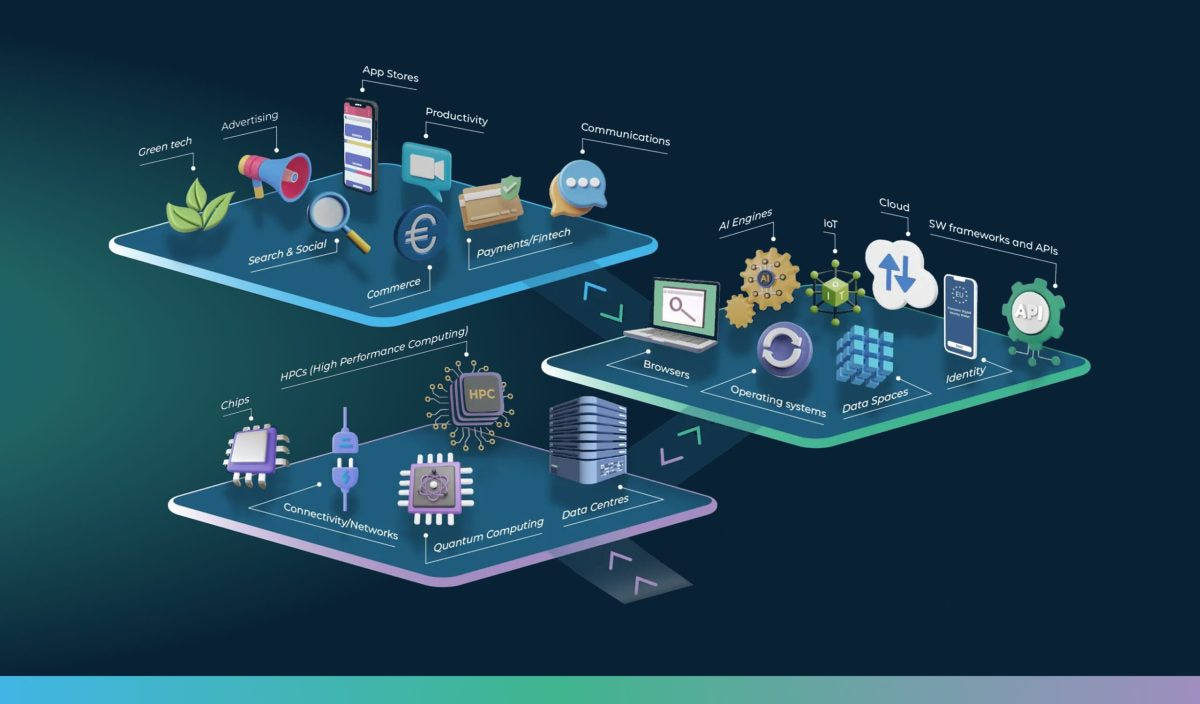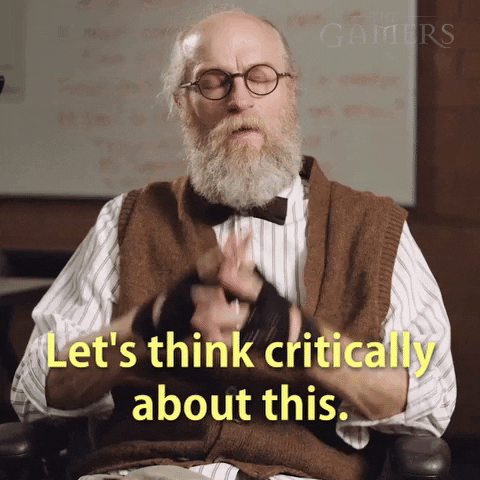A comment on the Eurostack proposal
Yet another billion euro approach to burn money?
tl;dr the EuroStack initiative represents for Europe an ambitious vision for achieving digital sovereignty through a comprehensive technological and industrial strategy. It was developed by a consortium led by Prof. Francesca Bria and supported by institutions including the Bertelsmann Stiftung, Stiftung Mercator, UCL IIPP, and CEPS. If you are bored, I can recommend to read this 127-page report that outlines a €300 billion investment plan over 10 years to reduce Europe's critical dependencies on foreign digital technologies.
Ok, first let me give you some more context.
Current Context and Challenges
Over 80% of Europe's digital technologies are imported, creating systemic vulnerabilities and several critical dependencies:
Cloud Infrastructure: Three U.S.-based services – AWS, Azure, and Google Cloud – dominate almost 70% of the European cloud computing market, while Europe's largest cloud provider holds a mere 2% share
Semiconductors: Europe consumes about 20% of the world's microchips but manufactures only 9%
AI Development: Since 2017, 70% of foundational AI models have been developed in the United States and 15% in China - in Europe, well nothing really relevant, except BFL with Flux
Operating Systems: Microsoft Windows powers more than 70% of desktops, while Google's Android commands 72% of Europe's mobile market; the only hope „Linux“ is open source, yet the development of its derivates are US led
What‘s the problem with that?
Well we can look at it from different perspectives. Political, sociotechnical, economical etc. All of them can come up with shared issue: Europe sucks in its digital competency.
(And yes we have a few cool products - Spotify, Lovable…)
EuroStacks Vision
The initiative proposes building a "common digital stack" - an integrated ecosystem of technologies organized in interconnected layers. And yes, that‘s nothing new so far:
Resources: Critical raw materials, energy, and water
Chips: Semiconductors and processors
Networks: Digital and physical connectivity infrastructure
Connected Devices & IoT: Smart devices and sensors
Cloud Infrastructure: Data storage and computational power
Software: Operating systems, applications, and platforms
Data and AI: Processing capabilities, AI models and intelligence systems
To make this vision come true, the EuroStack introduces seven core components:
EuroChips: Focus on advanced semiconductor manufacturing, particularly through open-standard RISC-V architecture
EuroConnect: Pan-European network infrastructure for 5G/6G
SovereignCloud: Decentralized, GDPR-compliant cloud services
SmartEurope IoT: Interoperable IoT platform for smart cities and Industry 5.0
DataCommons: Federated data exchange platforms
EuroOS: Including the Digital Identity Wallet and Digital Euro
SovereignAI: AI-as-a-service infrastructure
As it’s slightly complicated to remember all this, just think of it like: we do everything by ourself.
But how?
In a world where the best AI engineers gets a 100m$ signup bonus, Europes money spending approach will not any price. (And yes, that payments are insanely stupid, but that’s how it is)
A Disillusioned Implementation Strategy
To get the things rolling the consortium defines a different initiatives.
With the creation of a European Sovereign Tech Fund with initial €10 billion investment, and which should be increased to €300 billion over the next decade, the Tech Fund should invest heavily in the right ideas.
Now, money isn’t everything, you need ideas. The EuroStack Challenge should run competitions to develop Minimum Viable Products (MVPs). The idea of fast prototyping isn’t that bad. But I can see already the biased approach prioritizing settled enterprises rather than smart people with maybe even no company.
Besides, they will start with a phased roadmap starting immediately with mature technologies. So, let‘s start with the old but gold stuff.
Last but not least, the paper proposes to set up the governance structure model after successful EU institutions… I just don‘t know which successful EU institution they see. The latest prominent EU institution defines Microsoft products as risk-free in regard to GDPR, just a few weeks after the French legal representative of Microsoft said they can‘t assure that confidential data is going to the US…
To guide this strategy the paper provides further principles and strategic approaches. I don’t want to go through them here in detail. They are obvious and decently ok.
However, three things are interesting though:
The paper proposes Data as a Common Good and that it should be treated as a shared resource. I have no idea how it should work together with all the “high” data protection standards.
Furthermore, there is a principle about Decentralized Infrastructure - combining edge and centralized computing. This decentralization, edge continuum theme has somehow become the cornerstone for every European initiative related to cloud computing.
The last one is the strong focus on open source. I’m happy to hear that, but the problem is not the usage, it is the investment and the development. In fact, most EU companies use OSS massively but don’t spend a penny on it. Maybe we should introduce an OSS tax…
Are there Innovative Aspects?
No.
There are many thoughts around openness, the different layers, treating such tech more as an open good rather than a commercial asset.
But frankly speaking, that just lets us use the €10b and invest it into ICP. That practically does all this…
Ok, you see I’m slightly critical here so let me take some more points.
Downsides and Critical Issues
Where to start?
The timeline is unrealistic. Also, 10 years is looking realistic, it is way too long a road. This timeline, in my opinion, stems from the tone you sometimes read that we should build competitive alternatives. Also, the report acknowledges Europe's late start but heavily underestimates catch-up challenges.
We also have cultural challenges. Work your ass off is unfortunately not the modus operandi people are looking for. This leads to a drastic slowdown, and already there is a talent gap. Look, working your ass off is for sure not the best thing, but even working hard, the hours you work have become a rarity.
(If you have a full-time employee in Germany, the standard is a 5-day work week with 36-40 hours; they have, on average, 30 days off, around 10 public holidays, and since COVID, the average is 19 days sick per year. In other words, an FTE just works 3/4 of the year.) - Again, that’s in some way good, but we need to respect that in such plans.
Besides, other countries like the US or China, have been investing for many years, 10x the amount of money in the industry than Europe. And those are two countries, Europe has 27…
Now, the biggest issue I would call structural concerns, which are:
Over-reliance on Public Sector: The initiative heavily depends on public procurement and funding. But a greater emphasis on creating genuine market demand and private sector leadership could improve sustainability.
Insufficient Focus on User Experience: The report focuses heavily on infrastructure but less on creating compelling user-facing products that can compete with existing solutions. This doesn’t sound so important, but people only use what they like to use. If you have a bad time using those stacks, you won’t use them, and with that, there will be no adoption.
Underestimating Network Effects: The power of existing platforms comes not just from technology but from network effects and ecosystems that took decades to build. We have strong networks in Europe, but again we have to respect 27 countries, at least.
How to Improve This Paper?
Rather than abandoning the vision, we need strategic pragmatism:
Pick Our Battles: We can't “win” everywhere, but we have to gain competence. Focusing on areas where Europe has genuine advantages - privacy tech, industrial IoT, sustainable computing, could be an approach, but this isn’t a sellable asset.
Search for Innovation: Also, it is anticipated that with the MVP procedure, I think we can search and find innovative space faster without the MVP procedure. IT is done the same way the last 40 years, time to change that.
Embrace Strategic Partnerships: Complete autonomy is neither feasible nor desirable. Define what's truly critical and partner wisely elsewhere (South Korea, Japan, South America, …).
Fix the Fundamentals: Before building new platforms, address why our startups sell to American buyers and why our talent moves to Silicon Valley.
Learn from Success: Estonia's digital government and Finland's education system show European digital excellence is possible - let's scale what works.
Are there Alternative Approaches?
The report sounds very confident, almost like a “that’s the plan, there is no other way”. Well, it’s an idea. So I searched for alternatives and comments on the approach and have found a few proposals/alternatives. In Italic, my thoughts.
Selective Sovereignty: Focus on truly critical infrastructure (payment systems, identity, core government services) while partnering strategically elsewhere. I think that could be a strong starting point. Identity solutions and core government services can be based on Ukraine's DIA app, for example.
Regulatory Innovation: Use Europe's regulatory strength more strategically - not just to constrain but to create new markets (e.g., mandating interoperability standards that level playing fields). Can we please stop with that bullshit that regulatory is a sellable innovative asset? No one wants to buy rules.
Bottom-up Innovation: Support grassroots open-source communities and startups rather than top-down industrial champions. Yes, yes, but it also needs the investment of large private enterprises that massively use open source but usually don’t spend on it, or at the wrong places.
Regional Specialization: Allow different EU regions to specialize in different stack layers based on existing strengths. I've seen this proposal a few times, but it lacks details on what it could look like.
The Bottom Line
The EuroStack represents necessary ambition, but success requires more than funding and regulation. We need to create products people want to use, ecosystems developers want to join, and companies investors want to fund.
Europe's digital future shouldn't be about recreating Silicon Valley but creating something uniquely European - combining our strengths in privacy, sustainability, and social responsibility, and finding our past in being innovative.
The question isn't whether we need digital sovereignty - we do. The question is whether the EuroStack's top-down, infrastructure-first approach is the right path, or whether we need a more agile, market-driven strategy that plays to our strengths while acknowledging our limitations.
What do you think? Is the EuroStack the bold vision Europe needs, or should we pursue a different path to digital independence?






Have you seen this debunking the myth response? https://www.digitalsme.eu/debunking-eurostack-myths/ . what you think? Also this note is quite useful (to think more about open source and open protocols) https://www.ceps.eu/going-beyond-the-eurostack-could-help-the-eu-build-a-truly-global-open-science-stack/